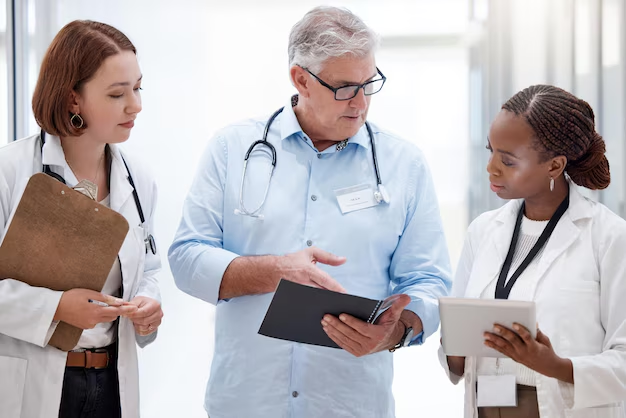Is Tuberculosis Curable? Here's What You Need to Know
Tuberculosis, often abbreviated as TB, is a disease that's woven deeply into the fabric of human history. For centuries, it has impacted societies around the globe, and understanding whether TB has a cure is more crucial today than ever. This article will explore the intricacies of TB, addressing its curability, treatment options, as well as relevant supportive information that answers broader questions you might have about this disease.
What is Tuberculosis?
Tuberculosis is an infectious disease caused by the bacterium Mycobacterium tuberculosis. It primarily affects the lungs but can also spread to other parts of the body such as the kidneys, spine, and brain. It’s a serious public health challenge worldwide and is spread through the air when an infected person coughs, sneezes, or speaks.
Key Facts About TB
- Infection vs. Disease: Not everyone infected with TB bacteria becomes sick. There are two TB-related conditions; latent TB infection and active TB disease.
- Prevalence: TB remains one of the top infectious disease killers globally, despite significant advances in treatment.
- Symptoms: Common symptoms of active TB include a persistent cough, weight loss, night sweats, and fever.
Is There a Cure for Tuberculosis?
Understanding TB Treatment
Simply put, yes, TB is curable with the right treatment. The standard treatment for drug-sensitive TB, which is the common form, involves a regimen of antibiotics over a course of typically six months. These medications must be taken precisely as prescribed to be effective and to prevent the bacteria from developing resistance.
First-Line Treatment Medications
The usual drugs involved in treating TB include:
- Isoniazid
- Rifampicin
- Ethambutol
- Pyrazinamide
This four-drug combination is essential to tackle the various bacterial populations residing in the body.
The Challenge of Drug-Resistant TB
Unfortunately, not all cases of TB are easily treated. Some strains of Mycobacterium tuberculosis have evolved resistance to standard treatments, leading to what is known as multidrug-resistant TB (MDR-TB) and extensively drug-resistant TB (XDR-TB).
Approaches to Drug-Resistant TB
- Longer Treatment Courses: These can extend up to 20 months.
- Second-Line Drugs: These include fluoroquinolones and injectable agents such as amikacin, kanamycin, or capreomycin.
- Newer Medications: Recently developed drugs like bedaquiline and delamanid have shown promise in treating drug-resistant TB.
Importance of Directly Observed Treatment
For both drug-sensitive and drug-resistant TB, Directly Observed Treatment, Short-course (DOTS) has been a cornerstone in TB control efforts. This strategy involves healthcare workers observing patients as they take their medication, ensuring adherence and minimizing the risk of resistance development.
Why Adherence to Treatment is Critical
To ensure TB is completely cured, patients must adhere strictly to their medication regimen. Missing doses or stopping the treatment prematurely can lead to treatment failure and the development of drug resistance.
Understanding Side Effects
Some individuals may experience side effects such as nausea, fatigue, or a rash. It’s important to manage these appropriately under medical supervision to maintain full adherence to the regimen.
Preventing Tuberculosis: How to Minimize Risk
Preventing TB transmission is as crucial as curing it, and this requires a community effort.
Vaccination
- BCG Vaccination: The Bacillus Calmette-Guérin (BCG) vaccine is often administered to infants in countries where TB is common, providing some protection against severe forms of TB in children.
Public Health Measures
- Isolation of Infectious Patients: To prevent spreading the disease, infectious patients may be isolated until they are not contagious.
- Air Ventilation: Ensuring spaces are well-ventilated can minimize transmission risk.
- Wearing Masks: In health settings and crowded places, masks can be a significant protective measure.
Innovations and Future Directions in TB Care
Advances in Diagnostics
Rapid diagnostic tests such as GeneXpert can detect TB and rifampicin resistance quickly, assisting in the prompt start of appropriate treatments.
Research and Development
Continuous research is ongoing to develop shorter, more effective treatment regimens, vaccines, and strategies for preventing TB transmission.
Community-Based Approaches
Empowering communities and individuals with education on TB and its prevention can play a vital role in eradicating the disease.
Empowering the Global Fight Against TB
Tuberculosis might seem like a disease from the past, but it is still very much a present-day challenge. Curable as it is, the global fight against TB requires committed efforts from individuals, healthcare providers, and policymakers, ensuring access to diagnosis, effective treatment, and comprehensive public health strategies.
Key Takeaways:
- 🌟 TB is curable with appropriate antibiotics. Ensuring adherence to the treatment regimen is critical.
- 🚫 Drug-resistant TB is harder to treat but not without options. New medications provide hope.
- ✅ Vaccination and public health strategies are paramount in preventing TB and its spread.
- 🔍 Rapid diagnostics like GeneXpert are improving the speed and accuracy of TB detection.
- 🌍 Education and community engagement are crucial for global TB elimination efforts.
Understanding, treating, and preventing TB is a shared responsibility. By staying informed and supporting public health initiatives, we can work towards a world free of tuberculosis.
